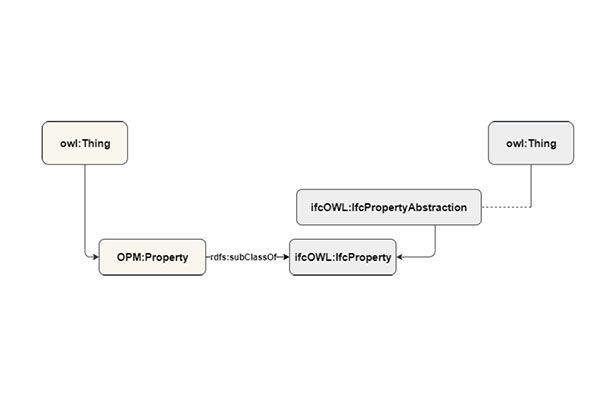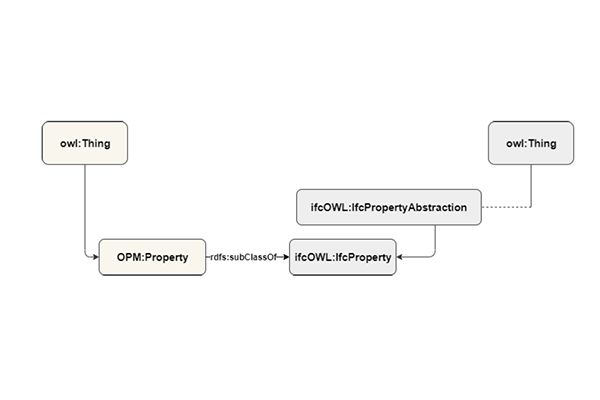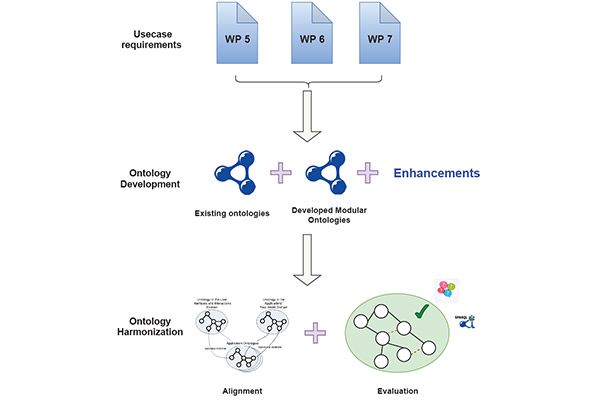Linked Data technologies have been developed in order to connect concepts in a structured way, enhancing machine readability and enabling many features like semantic queries. The potential of such technologies is wide in many fields, in particular in the construction sector, which could benefit in many ways by their application. BIM4EEB wants to exploit Linked Data in the field of renovation starting from the need of organizing or creating from scratch the building model useful for the process of fast and efficient renovation. As a matter of fact, as-built data about the buildings may not be available in standard formats, may be divided or even not in digital format. Tor this reason, a framework managing renovation specific data coming from owners, tenants, designers, suppliers and other stakeholders is needed, exploiting existing data schemas such as IFC but integrating it with modular ontologies.
As highlighted in previous articles, the BIM4EEB framework of ontologies has been developed starting from an analysis of existing data schemas representing the refurbishment activities from pre-design to the operational phases. The core of the group of ontology is ifcOWL, as it represents the standard exchange protocol for AEC sector in OWL language. Other fields of interest, like the occupant behaviour and comfort management, sensor data, acoustics, etc., need specific support and representation as existing data schemas don’t include them. Having outlined the ontologies and the modules to be included in the framework, the next step consists in the ontology harmonization. This process aims at defining relations between objects defined in different schemas, reducing the labour work in the management and retrieval of information, besides limiting the complexity of the used frameworks.
The choice of delivering a network of ontologies is not trivial, but it comes on one side from the principles outlined by the World Wide Web Community (W3C), but also from the need of involving in the project different expertise, offering a better knowledge representation. In BIM4EEB the tool used to define requirements of particular domains is a set of competency questions, written by experts and used also to ease the use of these ontologies to new users. Each set of competency question corresponds to the domain covered by each tool in BIM4EEB toolkit, when available ontologies do not cover the same issues. They need to be complete, non-redundant and adapted to the expressivity of the ontology to be developed.
The process of harmonization continues with the ontology alignment, which consist in the process of finding corresponding entities between different ontologies. In this way, relations between different domains can be created thanks to the knowledge bridges available from the ontology syntax. The alignment can be conducted on different levels, from a simple terminological evaluation, in which similar names are compared, to a descriptive one, comparing the sets of properties, to a structural method, highlighting the different constructs used to represent an element and, finally, on the semantic level, on which the object of comparison is the domain described by the ontology. Object and properties in ontologies are aligned using axioms stating fundamental relations between entities. For example, in aligning ifcOWL ontology and the Ontology for Property Management (OPM), a simple alignment is expressed as it follows:
opm:Property
rdfs:subClassOf
ifcOWL:IfcProperty
This sentence is formed by a triplet of entities, as required by the syntax of the ontology languages. In this way, two elements belonging to different ontologies, are aligned using a fundamental relation as the one defining a sub-class of an entity. This alignment is not just terminological, but it is context-based as the two ontologies use a different approach to the property management. In this particular case, in fact, this choice of alignment has been justified by the missing time qualification of properties in ifcOWL, while the equivalents in OPM are variable in time.
The alignment is paired with the evaluation of ontologies in the harmonization process. The evaluation is the task measuring the quality of ontologies. Some of the principles of ontology have already been anticipated, e.g. the need for unique identifiers, but a process of evaluation of the coherence and efficacy of the ontologies is needed. Scientific literature1 specifies the approaches, the aspects, the criteria and particular methods for the evaluation. In general, the aspects evaluated are the vocabulary of the ontologies, its syntax, structure, semantics and its representation, intended as the relation between structure and semantics, typically present in the RDF graphs of ontologies. Generic objectives of quality and correctness are evaluated thanks to the criteria of accuracy, adaptability, completeness, computational efficiency, conciseness, consistency and clarity. The check on the content of an ontology may vary from tests on the link of URIs of an ontology to the verification of syntax rules about names, to checks about language tags, or the search for problematic trends making queries.
Between the analysed ontologies, in BIM4EEB a list of sixteen existing ontologies has been outlined, including the well-known ifcOWL ontology representing the IFC schema. The development of ontologies for BIM4EEB framework has brought to the development of the modules available as the Digital Construction Ontology suite, available HERE. The framework has been published on the W3C platforms in order to guarantee a continuing development for this framework. As of now, it is composed of ten ontologies which have been aligned to the ones cited before. The results of this development are going to be presented and exploited for standardization proposal both at W3C Linked Building Data Community Group meetings and at CEN Technical Committee 442 discussions, as the project represents an example of application in real environment of technologies aiming to ease the information exchange in the construction sector.
 BIM4EEB
BIM4EEB

